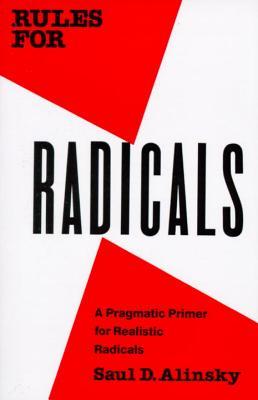nemobis ha recensito Rules for Radicals di Saul David Alinsky
Review of 'Rules for radicals' on 'Goodreads'
4 stelle
Err:508

196, pagine
lingua English
Pubblicato il 12 Febbraio 1972 da Vintage.
Rules for Radicals: A Pragmatic Primer for Realistic Radicals is the late work of community organizer Saul D. Alinsky, and his last book, published in 1971 shortly before his death. His goal for the Rules for Radicals was to create a guide for future community organizers to use in uniting low-income communities, or “Have-Nots”, in order to empower them to gain social, political, and economic equality by challenging the current agencies that promoted their inequality.[1] Within it, Alinsky compiled the lessons he had learned throughout his personal experiences of community organizing spanning from 1939-1971 and targeted these lessons at the current, new generation of radicals.[2]
Divided into ten chapters, each chapter of Rules for Radicals provides a lesson on how a community organizer can accomplish the goal of successfully uniting people into an active organization with the power to effect change on a variety of issues. Though targeted at community …
Rules for Radicals: A Pragmatic Primer for Realistic Radicals is the late work of community organizer Saul D. Alinsky, and his last book, published in 1971 shortly before his death. His goal for the Rules for Radicals was to create a guide for future community organizers to use in uniting low-income communities, or “Have-Nots”, in order to empower them to gain social, political, and economic equality by challenging the current agencies that promoted their inequality.[1] Within it, Alinsky compiled the lessons he had learned throughout his personal experiences of community organizing spanning from 1939-1971 and targeted these lessons at the current, new generation of radicals.[2]
Divided into ten chapters, each chapter of Rules for Radicals provides a lesson on how a community organizer can accomplish the goal of successfully uniting people into an active organization with the power to effect change on a variety of issues. Though targeted at community organization, these chapters also touch on a myriad of other issues that range from ethics, education, communication, and symbol construction to nonviolence and political philosophy.[3]
Though published for the new generation of counterculture-era organizers in 1971, Alinsky's principles have been successfully applied over the last four decades by numerous government, labor, community, and congregation-based organizations, and the main themes of his organizational methods that were elucidated upon in Rules for Radicals have been recurring elements in political campaigns in recent years
Err:508